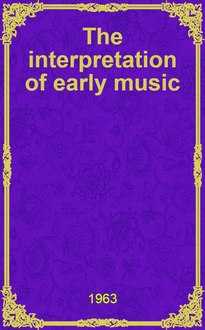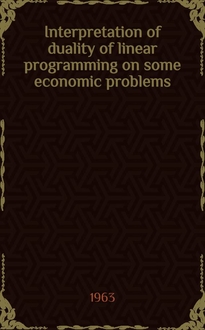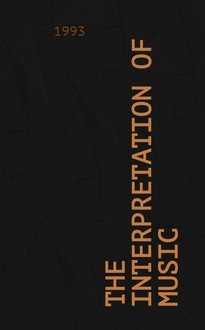Milky Way Introduction, Multiple Wavelengths, 21cm Line of Hydrogen
This video shows images of the sky along the Milky Way that were made using radio waves through gamma waves. The video discusses how neutral hydrogen ...
Greg Clements
New Galaxy Formation Insights | Joel Primack | Talks at Google
Prof. Joel Primack from UC Santa Cruz is a theoretical physicist best known for his research in cosmology and galaxy formation. In this talk Primack gives a brief ...
Talks at Google
Evolved Planetary Systems Around White Dwarfs
Boris Gaensicke (University of Warwick)
CfA Colloquium
Understanding Solar Photography | Christopher Witt + Todd Vorenkamp
The world of solar photography is beautiful yet complicated. As humans we've had a natural inclination to look skyward and wondered what we could learn from ...
B&H Photo Video
Dark Secrets About Big Bang Dark Matter | Dr. Abhas Mitra | TEDxHRCollege
Learn about the darker secrets of dark matter from a renowned astrophysicist! A retired astrophysicist from the BARC, he has contributed greatly to our ...
TEDx Talks
Kendrick Smith Public Lecture: Cosmology in the 21st Century
Cosmologist Kendrick Smith gives a guided tour through the expanding universe, from the big bang to our present-day understanding of dark matter and other ...
Perimeter Institute for Theoretical Physics
Atomic Emission Spectra
View emission spectra from a variety of light sources. Stunning! This video is part of the Flinn Scientific Best Practices for Teaching Chemistry Video Series, ...
FlinnScientific
Hydrogen-Atom-Bohr-Model-F19
Mark Blaser
Red Supergiants: New Perspectives on Dying Stars - Emily Levesque
More videos on http://video.ias.edu.
Institute for Advanced Study
Hydrogen spectral series
If you find our videos helpful you can support us by buying something from amazon. https://www.amazon.com/?tag=wiki-audio-20 Hydrogen spectral series The ...
WikiAudio
The Universe Beyond Visible Light - with Jen Gupta
Astrophysicist Jen Gupta explores views of the Universe at wavelengths other than visible light, from familiar objects like our Sun to weird and wonderful distant ...
The Royal Institution
New Eyes on Space: James Webb Space Telescope (live public talk)
The James Webb Space Telescope will continue to revolutionize our study of the cosmos. Slated for launch in late 2018, Webb will look deeper than either the ...
NASA Jet Propulsion Laboratory
Trick to find SPECTRAL LINES | Atomic Structure | Anirudh Walia Chemistry
Trick to find number of spectral lines by Anirudh Walia. Complete MOLE CONCEPT Notes : https://youtu.be/awpR59XtHlQ What to study in Physics for NEET: ...
Anirudh Walia
2.2 Hydrogen emission spectrum (SL)
This video explains the spectral lines in absorption and emission spectra, as well as the hydrogen emission spectrum. Help support this channel: ...
Mike Sugiyama Jones
ATA - Jill Tarter (SETI Talks)
SETI Talks Archive: http://seti.org/talks This talk will put the ATA into context with the rest of the SETI activities around the world and describe the initial SETI ...
SETI Institute
Light: Crash Course Astronomy #24
In order to understand how we study the universe, we need to talk a little bit about light. Light is a form of energy. Its wavelength tells us its energy and color.
CrashCourse
The Early Universe - Professor Carolin Crawford
When did the first stars form? And how did they assemble to form the earliest galaxies? http://www.gresham.ac.uk/lectures-and-events/the-early-universe We ...
Gresham College
The Interstellar Medium (Lecture - 03) by Professor G Srinivasan
Summer course 2018 - A Random walk in astro-physics Lecture - 03 : The Interstellar Medium by Professor G Srinivasan, Raman Research Institute (Retired) ...
International Centre for Theoretical Sciences
spectroscopy explained - with Crooked Science and USyd Kickstart
This video covers the basics of spectroscopy and the use of a spectrometer. Done in collaboration with Simon Crook (Crooked Science) and Tom Gordon ...
PhysicsHigh
The interstellar medium - Christopher McKee
Source - http://serious-science.org/videos/1278 University of California, Berkeley Prof. Christopher McKee on giant molecular clouds, hot gas in the halo of the ...
Serious Science
Sunlight-driven hydrogen formation by membrane-supported photoelectrochemical water splitting
In a March seminar hosted by the MIT Energy Initiative, Nathan Lewis of the California Institute of Technology discussed the research frontier involved with the ...
MIT Energy Initiative
How Stars Work
Get MagellanTV here: https://try.magellantv.com/launchpad and get an exclusive offer for our viewers: an extended, month-long trial, FREE. MagellanTV has the ...
Launch Pad Astronomy
Studying the beginning of the universe from the bottom of the world
For over 30 years, scientists have been going to the bottom of the Earth--the geographic South Pole--to make observations of the relic heat from the Big Bang, ...
Fermilab
50 Years of the Cosmic Microwave Background Radiation: What We Have Learned, What Questions Remain
Fifty years ago, in the spring of 1965, Prof. Robert Dicke at Princeton University recognized that the unexplained noise in an experimental Bell Telephone ...
UW Video
Red and Brown Dwarfs: Understanding Our Smallest and Closest Stellar Neighbors
Serge Dieterich of the Space Telescope Science Institute The majority of stars in our galaxy are smaller than our sun and some have diameters as small as ...
Hubble Space Telescope
Our Dynamic Sun - Helen Mason at the Royal Institution
Dr Helen Mason explores what causes solar activity and what we are learning about the Sun from space observations in the ultraviolet and X-ray wavelength ...
The Royal Institution
How to Build a Radio Telescope (See Satellites 35,000km Away!)
Over the last 2 months me and my friend Artem (you met him in the last video) built our first radio telescope. It was built mostly out of off the shelf components, like ...
The Thought Emporium
Ben Jenkins | Introduction to Spectroscopy | NEAF Talks
Filmed April 2015 Once only accessible to professional observatories and universities, advances in amateur equipment has made the science of spectroscopy ...
NEAF Talks
Quasars: the Brightest Black Holes - Professor Carolin Crawford
Quasars are among the most dramatic objects anywhere in the cosmos. They emit prodigious amounts of energy, all due to a supermassive black hole at the ...
Gresham College
What Rock Star Brian May Discovered About Interplanetary Dust
Brian May, best known as a legendary rock guitaris is a legitimate scientist, his research in the 1970's wasn't written up and submitted until 2007, but while he ...
Scott Manley
2. The Solar Resource
MIT 2.627 Fundamentals of Photovoltaics, Fall 2011 View the complete course: http://ocw.mit.edu/2-627F11 Instructor: Tonio Buonassisi This lecture explores ...
MIT OpenCourseWare
ANITA Lecture - Radio Astronomy and Interferometry Fundamentals – David Wilner
Title: Radio Astronomy and Interferometry Fundamentals [Lecture 1/2] Speaker: David Wilner, Harvard-Smithsonian Center for Astrophysics (dwilner at ...
Anita Chapter
Atomic Emission Spectrum
Lecture on the Bohr model of the atom, atomic emission spectrum and how they apply to the real world.
Adam Atallah
2.2 The Line Spectrum of Hydrogen [SL IB Chemistry]
2.3.3 Explain how the lines in the emission spectrum of hydrogen are related to electron energy levels. You need to understand convergence, production of UV ...
Richard Thornley
What's the Weather Like in Space and Why Should We Care? - with Lucie Green
Our solar system can be a stormy place. Events such as solar wind and coronal mass ejections have effects on Earth, disrupting communications, GPS and ...
The Royal Institution
How do we know there's a black hole in every galaxy centre? | History of Supermassive Black Holes
At the centre of every galaxy, there is a supermassive black hole (a million to a billion times bigger than the Sun). But how do we even know that? There are so ...
Dr. Becky
Quantum Dots
Gerhard Klimeck, 2005.07.21 Electrical and Computer Engineering, Purdue University Table of Contents: 00:00 Nano 101 Quantum Dots 00:53 Presentation ...
nanohubtechtalks
Bunyan Lecture 1993 - Carl Sagan
VHS tape from 1993; cuts off suddenly at 2 hrs, 3min.
Stanford Physics
How fast does the Sun orbit the Milky Way? | Brian May's Astrophysics Thesis on Solar System Dust
This week I sat down and read Dr Brian May's (from Queen) astrophysics thesis all about dust in the plane of the Solar System. You can usually see the glow ...
Dr. Becky
The 35th Bunyan Lecture: Sara Seager - "Exoplanets and the Search for Habitable Worlds"
May 14, 2018 - 7:30pm Hewlett Teaching Center 370 Serra Mall Auditorium 201 Confirmed Speaker(s): Sara Seager Free and open to the public Sara Seager, ...
Stanford Physics
The Next Big Questions in Astronomy - Professor Carolin Crawford
In her final Gresham Lecture, Professor Crawford talks about where the next big breakthrough will come from: ...
Gresham College
More Things in the Heavens: Infrared Exploration with the Spitzer Space Telescope
Tune in July 7 at 8 pm ET to explore the legacy of the Spitzer Space Telescope and how it sets the stage for the future. The Spitzer Space Telescope, NASA's ...
Smithsonian National Air and Space Museum


























































